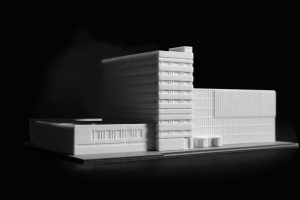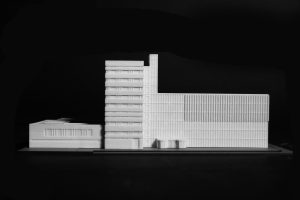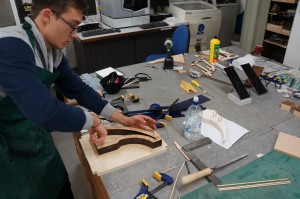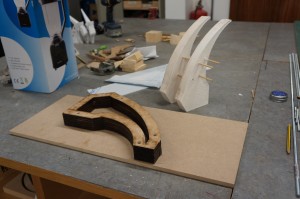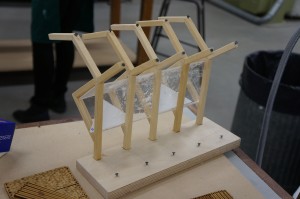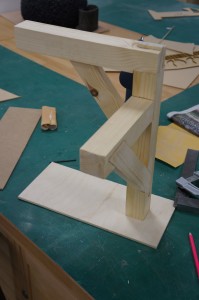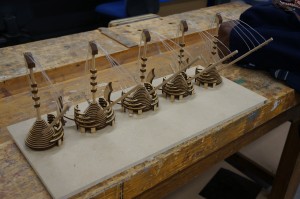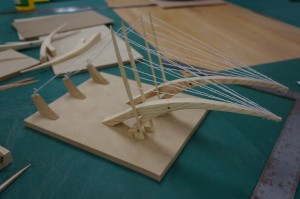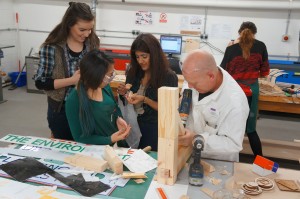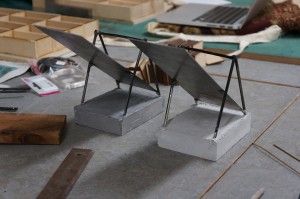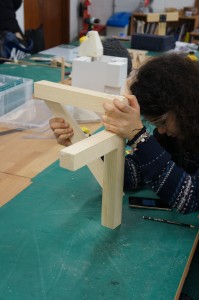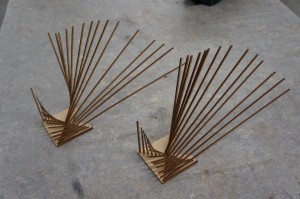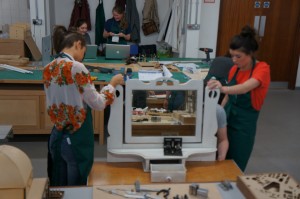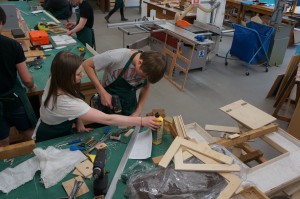Tag Archives: 2nd Year BA (Hons) Architecture
2nd Year Creative Constructs: In Isolation Brief
The last two weeks have been extremely busy in the workshop thanks to the 2nd year Creative Constructs briefs. By producing a series of models, each taking the idea to a more defined level of explanation, students are expected to demonstrate their understanding of aspects of structural design. These should include understanding of scale, junction detailing, overall strength of the structure and their ability to be repeated to work in conjunction with identical components.
Many of the projects we’ve seen for this brief have followed the trends of others in the group who have made a quick start. This has been an issue for latecomers due to the time restraints and capacity of the workshops both here and Chatham.
For students taking part in this project in future it’s worth noting the time involved in producing these projects. Many of you have been surprised at the amount of thought required to make your models a reality though really this shouldn’t come as a shock as that thought is essential to your learning. By taking the time early on to think about the different aspects of your idea and defining them accurately you can then take your information and apply those defined ideas to the creation of your model.
Without defined constraints you are simply guessing or making aspects of your project up on the spot which isn’t really helping you to learn anything. You should be able to explain the use of particular joints of construction methods based on research rather than their aesthetic or convenience to make as a model. There have been some interesting ideas appearing so far and I’m sure they’ll be more to come!
Scott
2nd Year 1:20 Detail Section ‘Halley 6’ Project
Second year groups were asked to produce a 1:20 detailed section model of their construction pack which was provided by another group in the year. The objective of the project was to use the model to demonstrate their understanding of the buildings construction in terms of its technical details, services and environmental performance.
This groups building, known as ‘Halley 6’ is the British Antarctica research station. The chosen section featured two supporting legs and look at internal structural elements in relation to the outer facade as well as ducting voids.
The submission was given in alongside a report including a 3D Digital structural model that also showed the main structural components.
The model was made using plastic tubing for structural space frame components, vac forming plastic sheets to form the leg supports and clad the exterior. In order to make the leg shape a former was made to wrap the plastic around which was heated and glued into shape. The leg assembly and skis were represented with laser cut elements that were spray painted. Flooring and interior walls were made using 3mm MDF.
Structural Detail Model by Andra Calin
2nd year student Andra Calin has been developing a structural concept model that is expanding on a sketch model inspired by the form of a bird. Initially Andra produced a paper model of her idea which loosely defined what the structure would look like. For this next model she has increased its scale and added more detail. This kind of model will raise questions regarding connection detail and overall practicality of the structure.



For me its these intermediate types of development model that are the most fun to construct as they help clearly define details that can be replicated or improved upon and I hope to see more of these in the coming weeks as these ideas progress! Scott
Events Month
Earlier this month 5th Year students took on the role of supervisors for groups of 1st and 2nd Year’s group projects. This consisted of a shared brief laid out by the 5th years to give an insight into group working and basic making in the Architecture Degree courses.


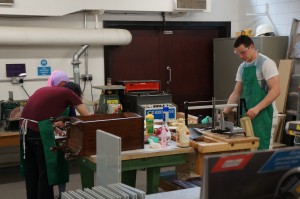 The tasks laid out were varied and required full participation from all involved to meet the deadlines. Of particular success was the furniture restoration project that aimed to increase the value of old furniture through simple repair or re-design. Items of old furniture were purchased from charities with the aim of increasing their value through restoration. All sales profits then going back to the charities they were bought from.
The tasks laid out were varied and required full participation from all involved to meet the deadlines. Of particular success was the furniture restoration project that aimed to increase the value of old furniture through simple repair or re-design. Items of old furniture were purchased from charities with the aim of increasing their value through restoration. All sales profits then going back to the charities they were bought from.

